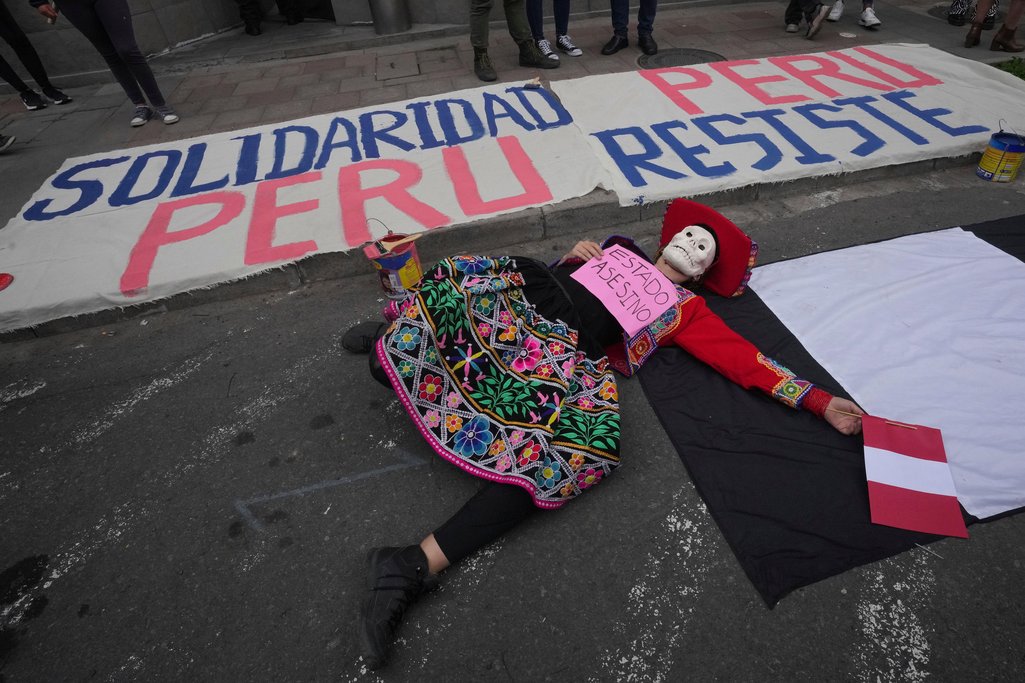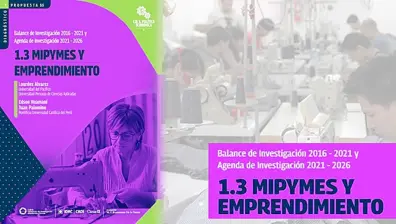They’ve had enough. Lima, last month | Lucas Aguayo Araos / dpa / Alamy Stock Photo
The next chapter of Peru’s democracy must focus on the lasting injustices of colonialism
“This democracy is no longer a democracy.” This is the motto of a historical social movement that is evolving in Peru. It’s no exaggeration. In December President Pedro Castillo attempted a coup d’état by dissolving Congress and was deposed; in the nine weeks since then, social unrest has left many dead. Forty-eight have died in clashes with security forces, 11 in situations related to roadblocks, and one police officer allegedly killed.
The short administration of the current president, Dina Boluarte – who was vice-president to Castillo – has unleashed a spiral of police repression, protest criminalisation and an attack on public truth, a violent acceleration of the slow collapse of Peruvian democracy.
It’s not clear how the crisis will end. But we can be certain that the next attempt at government will fail too unless it addresses wrongs that go back centuries.
The cycle that is now ending so chaotically started in 2001 after the downfall of the autocratic and corrupt ten-year regime of Alberto Fujimori. His was a precursor of today’s illiberal governments. In the preceding decade, the old parties had become less and less politically relevant; in their place electoral enterprises had arisen that mimicked the slackly regulated, informal behaviour of many Peruvian business enterprises.
*
 The sign reads “Killer State”; the banner, “Solidarity Peru Resists”. In front of the Peruvian embassy in Quito, Ecuador, last month | Dolores Ochoa / AP Photo / Alamy Stock Photo
The sign reads “Killer State”; the banner, “Solidarity Peru Resists”. In front of the Peruvian embassy in Quito, Ecuador, last month | Dolores Ochoa / AP Photo / Alamy Stock Photo*
In many ways, Fujimori’s own electoral enterprise was the foundation of this structure. After his ousting in 2000, the drive for a better democracy could not reform this blueprint, and many iterations have evolved since. Organisations have arisen that range from refurbished traditional parties to new parties that are in effect political branches of private economic interests that coordinate lobbying for whatever agenda suits their electoral aims, particularly those directed to dismantle the regulatory and progressive policy push of the last two decades.
In the general elections of 2016, this system began to fall victim to its embedded dysfunctionality. Alberto’s daughter and political heir, Keiko Fujimori, narrowly lost the presidential election to a former banker, Pedro Pablo Kuczynski. But thanks to biases in the electoral formula that grants seats in Congress, her party, Popular Force, had won a supermajority there, which enabled Congress to boycott the policies of the new president. And so Keiko Fujimori tried to govern Peru through Congress.
After the resignations of two presidents, one impeachment, a dissolution of Congress, an emergency government, new elections and an attempted coup d’état, one feature has remained constant: the original ‘Fujimorism’. This is a political school of thought which seeks to entrench congressional powers over policy, the appointments of judges for the Constitutional Court and the head of the Ombudsman Office, and to revert progressive and technocratic reforms designed to regulate lobbying, electoral laws and in general control over crucial gatekeepers of state power and money. It is a coordinated effort to create a sort of oligarchic parliamentarism.
 Lima, Peru, last month | Sebastian Castañeda / Reuters / Alamy Stock Photo
Lima, Peru, last month | Sebastian Castañeda / Reuters / Alamy Stock Photo*
The persistent unpopularity of subsequent Congresses has turned into a real crisis now. Vast segments of the population do not feel that their claims, identities, priorities and sensibilities are, in some way, represented by the 130 legislators. Castillo’s election in 2021 made the consolidation of Fujimorism urgent, as the proxy war between the presidency and Congress ignited the increasing ideological, racial and class confrontation that we are witnessing now.
Old wounds wide open
Pedro Castillo came to power after a bitter struggle against Keiko Fujimori. The candidate of a far-left party, Free Peru, he had been a rural schoolteacher and a union leader. However, he had never been elected to public office before and was unknown to most Peruvians. Castillo’s appeal came more from what he represented than from what he said. He used confrontational rhetoric to present himself as radical, but most of it didn’t push a discernible radical or solid progressive agenda. But he was a credible figure for the rural, Indigenous and urban poor who voted for him: he looked like them, he spoke like them, he dressed like them.
Once in office, he paid back political favours, appointed cronies, didn’t advance a significant leftist plan and led a mediocre and corrupt administration.
Meanwhile, Peruvian right-wing parties and the dominant media – one company owns 78% of outlets in the country and several TV channels – ran an intransigent campaign that mixed racist undertones, false fraud claims, fake news and more credible stories of Castillo’s moral and political unfitness. They adapted extreme-right populism for Peru, mimicking the Trump playbook with local variations: ‘Communists’ and ‘terrorists’ are behind any political dissent from human rights defenders, independent journalists, reformists, moderates, progressives or leftists.
*
 Lima, Peru, last month | Guadalupe Pardo/Associated Press/Alamy Stock Photo
Lima, Peru, last month | Guadalupe Pardo/Associated Press/Alamy Stock Photo*
But crucially, they opened the wounds of a racialised society where colonial undercurrents run deep. Politicians, police, right-wing groups and even the current president echo a discourse of hate, while the police and the prosecutors are implementing an outdated anti-terrorist doctrine. It all encourages people to see political opponents, be they Andean peasants, Indigenous women or public university students, as terrorists.
By evoking the terrorism of the 1980s Maoist Shining Path insurgency in framing the current social movement, the Peruvian right advances a dangerous fantasy to enable a state of emergency. Repressive policing is justified and the value of human rights eroded as civilian killings are deemed ”well deserved“, as one right-wing commenter recently said.
These various trends are creating a chaotic social crisis where hundreds of groups that differ in strategy and tactics of protest converge. Some clash with the police, enforce roadblocks or attempt to occupy airports. But most have tirelessly demonstrated in Lima and regional capitals, and come together around essential demands: new elections, the president’s resignation and the dissolution of Congress. Some push for a constitutional assembly.
These are demands that point not only to the collapse of political representation – the ongoing attempt to install an oligarchic de facto parliamentarism dominated by the right – but to the opening of a new democratic chapter: one that credibly puts at its centre the unresolved grievances that have haunted Peru for 200 years. At least the diagnosis is clear: this democracy is no longer a democracy.
Compartir esto::
- Haz clic para compartir en Twitter (Se abre en una ventana nueva)
- Haz clic para compartir en Facebook (Se abre en una ventana nueva)
- Haz clic para compartir en LinkedIn (Se abre en una ventana nueva)
- Haz clic para compartir en WhatsApp (Se abre en una ventana nueva)
- Haz clic para compartir en Pinterest (Se abre en una ventana nueva)
- Haz clic para enviar un enlace por correo electrónico a un amigo (Se abre en una ventana nueva)

























